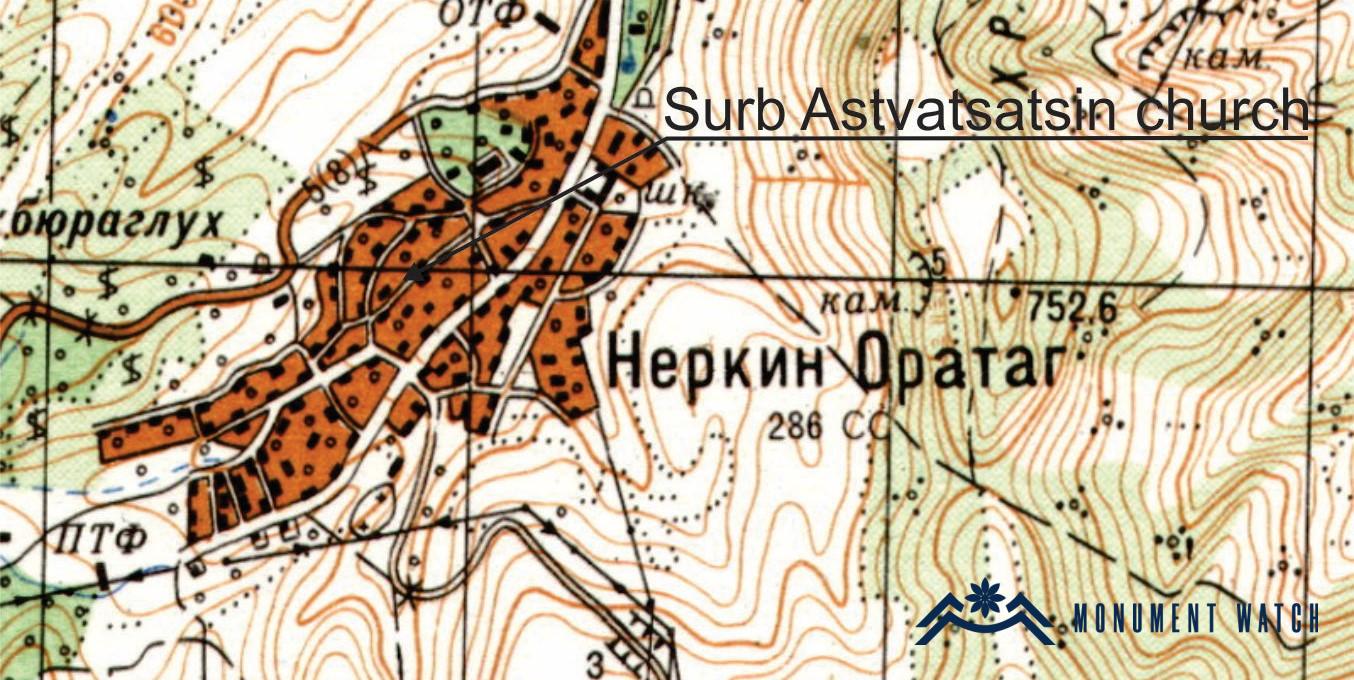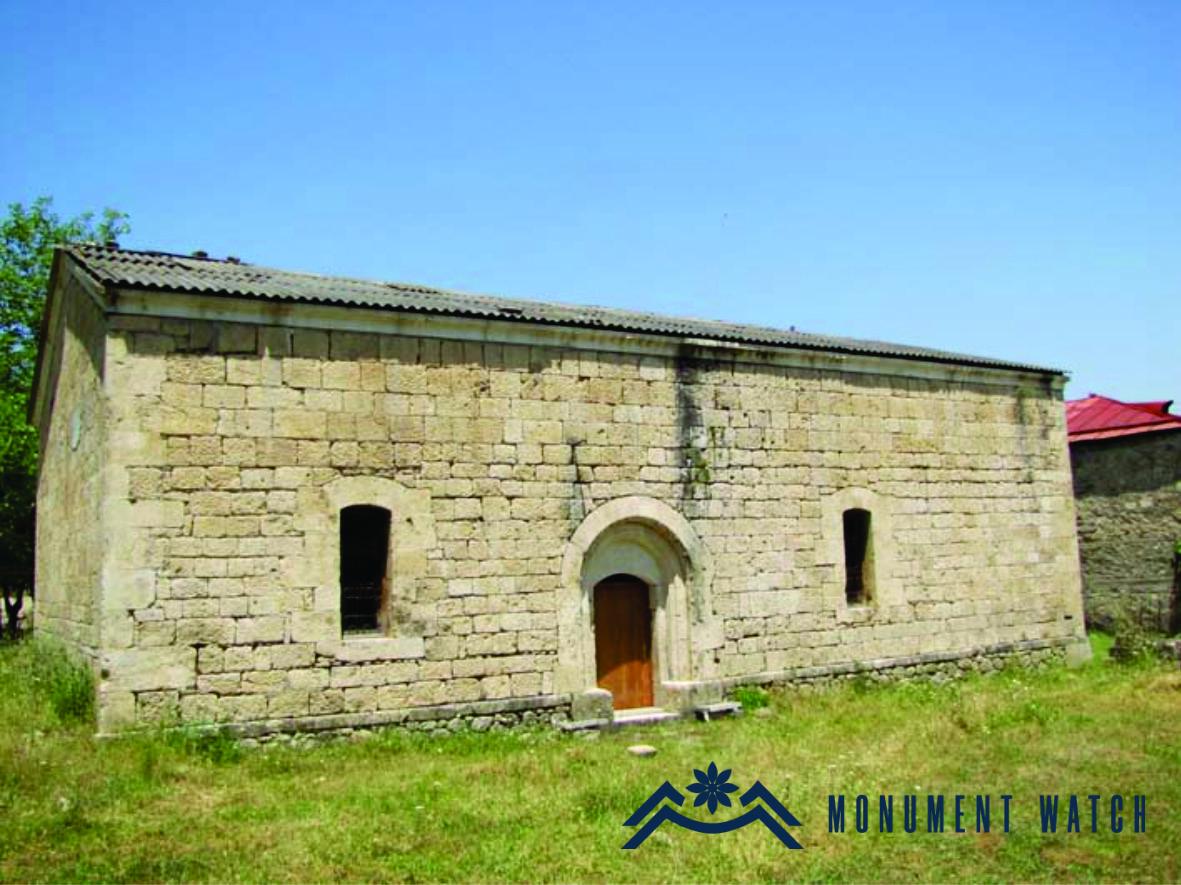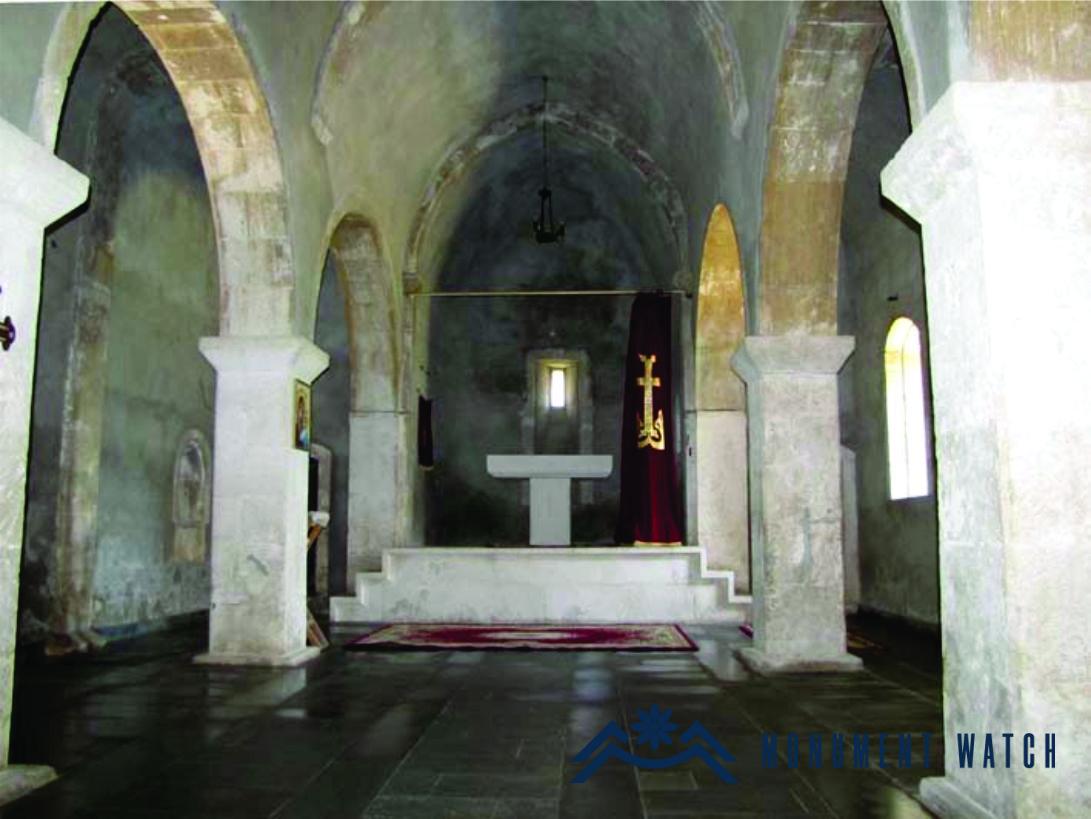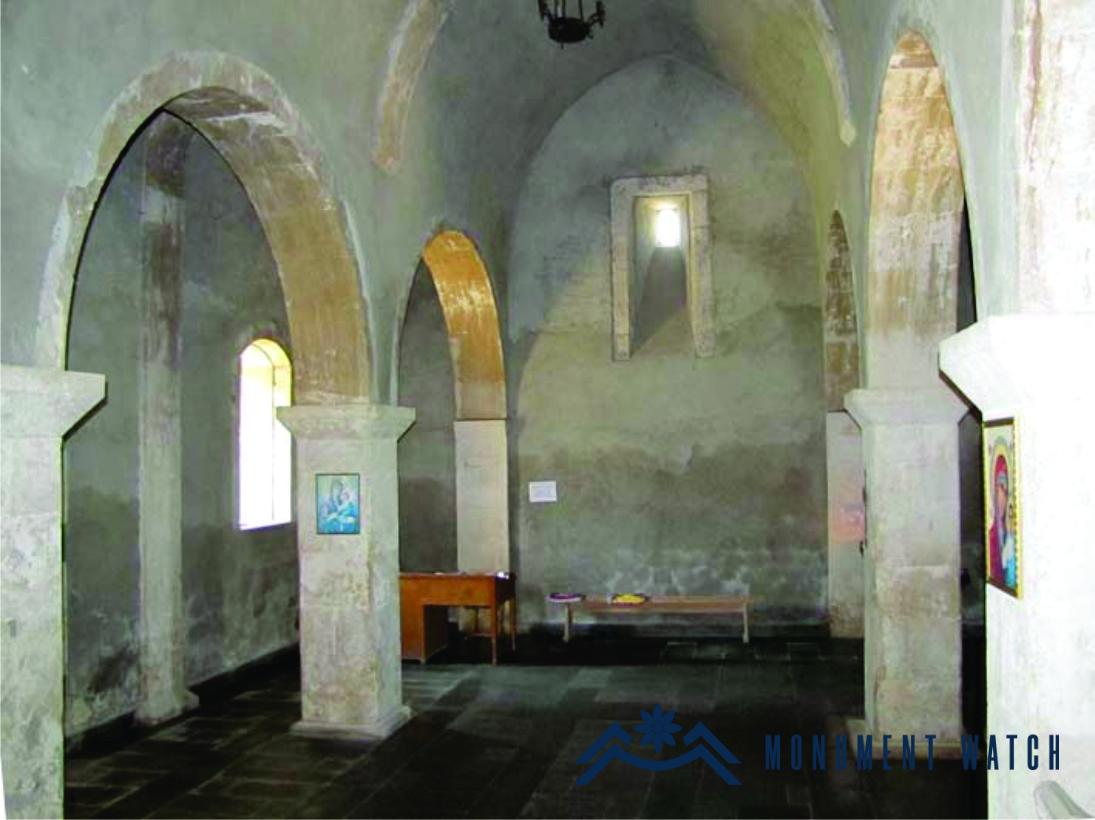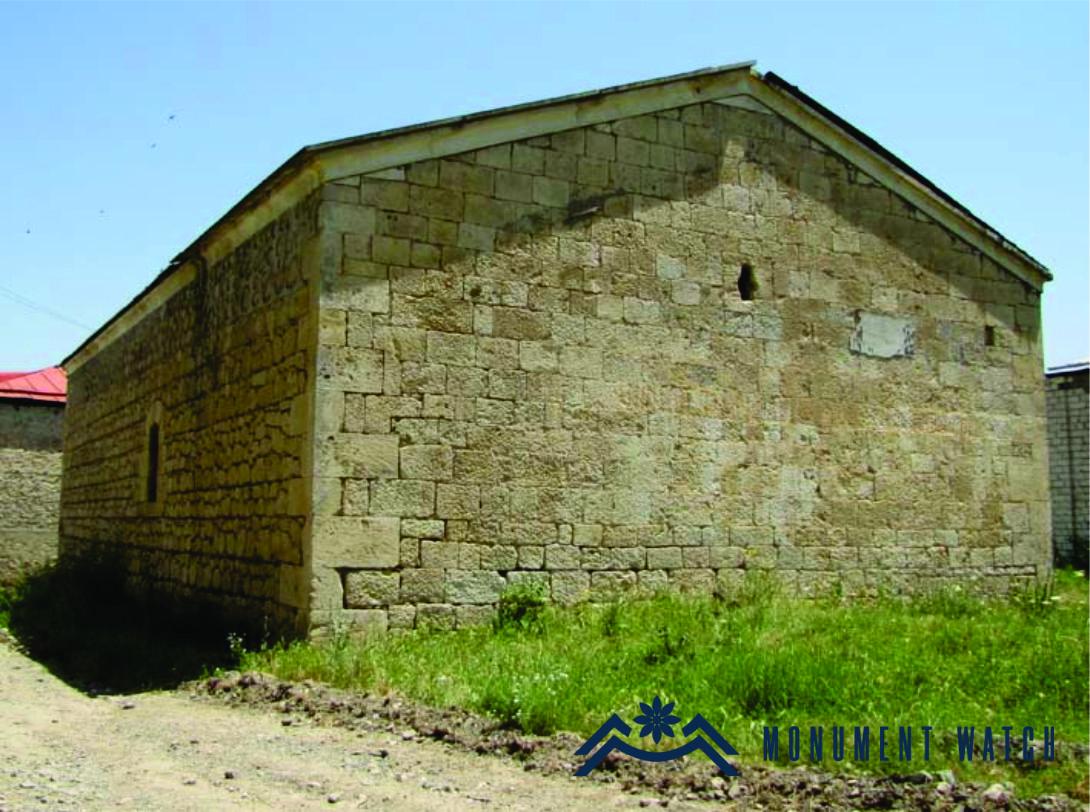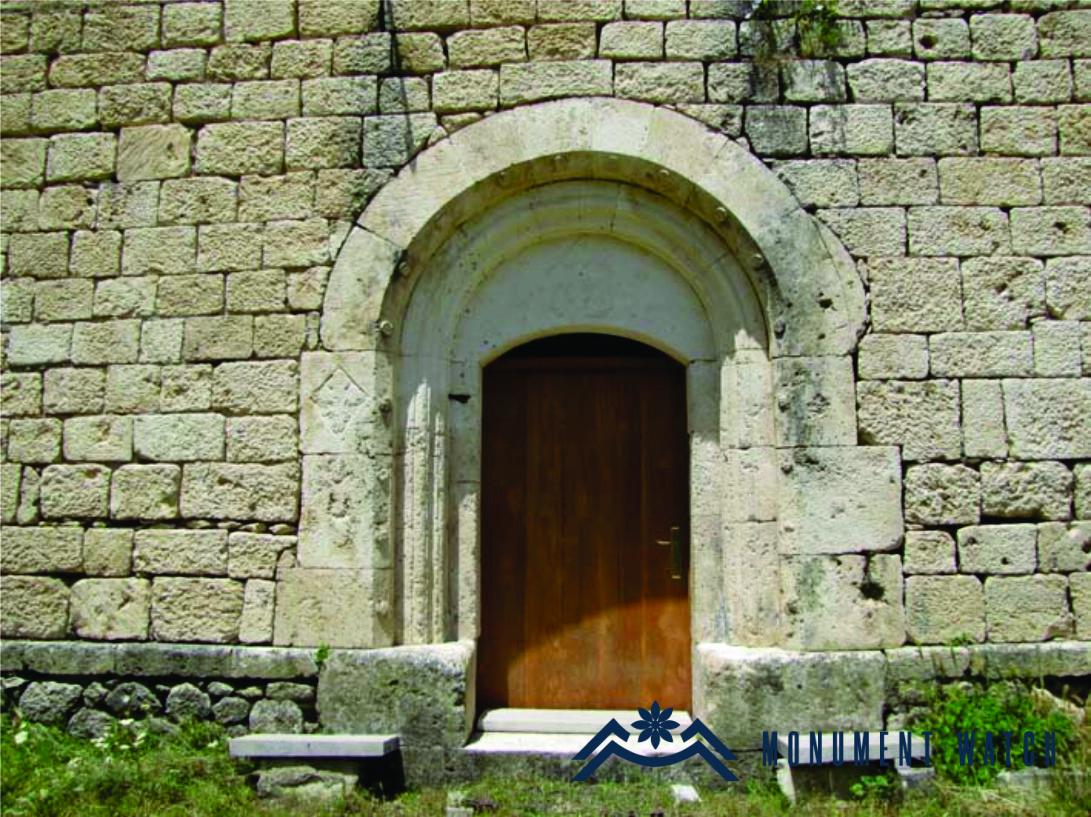The Surb Astvatsatsin Church of Inner Horatagh village
Location
The Surb Astvatsatsin Church is situated in the central area of Inner Horatagh village, in the Martakert region of the Republic of Artsakh (Fig. 1).
Historical overview
Inner Horatagh is a relatively recent settlement, emerging in the early 19th century. The construction of the church occurred towards the latter part of the 19th century, operating until the onset of the Soviet era.
In his work "Artsakh," Makar Barkhudaryants provides concise details about the village, stating: "Horatagh, nestled among the orchards of Kusapat, stands as a distinct village closely intertwined with the households there"(Barkhutareants 1895, 155). The village priest likely commuted from the nearby Kusapat to serve in the village church.
Architectural-compositional examination
Constructed with local yellowish limestone and lime mortar, the three-nave vaulted hall has a rectangular plan of 16.2 x 7.5 meters and 9.6 meters high. The entire interior is lined with polished, semi-finished stones. The vault is supported by eight columns against the walls, as well as four independent columns with arches rising from them (Figs. 2, 3). Its roof is two-pitched and tapers to the north and south on the outside. The two sacristies are parallel to the tabernacle, which faces east. It features a high stage and a semi-circular tabernacle. There is a single storage niche on the tabernacle's north and south walls.
Light filters into the interior through a small rectangular window situated in the central part of the tabernacle, widening inwards. Another small window on the western facade allows additional light to enter (Fig. 4). The two remaining windows, featuring larger semi-arched tops, are positioned on the south and north sides.
The sole entrance is located at the central part of the southern facade. Its arched frame is adorned with spherical ornaments and cross sculptures (Fig. 5). Positioned in the northern wall, adjacent to the sacristy, is a baptismal font nestled within an arched alcove featuring a finely decorated frame.
The condition before, during, and after the war
During the Soviet era, the church changed function. However, following the independence of Artsakh, efforts were made to restore it to its original purpose as a place of worship.
Remarkably, the Surb Astvatsatsin Church remained unharmed during the conflict in 2020. During the military operations of September 19-20, 2023, Artsakh fell entirely under Azerbaijani control, leading to the forced displacement of the population of Horatagh village. Presently, there is no available information regarding the current condition of the monument.
Bibliography
- Barkhutareants 1895 - Barkhutareants M., Artsakh, Baku.
The Surb Astvatsatsin Church of Inner Horatagh village
Artsakh
